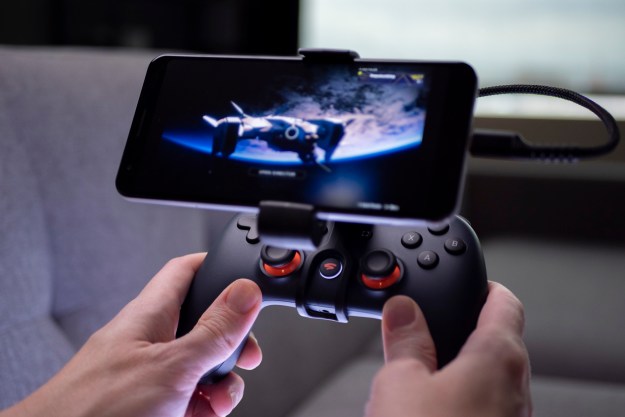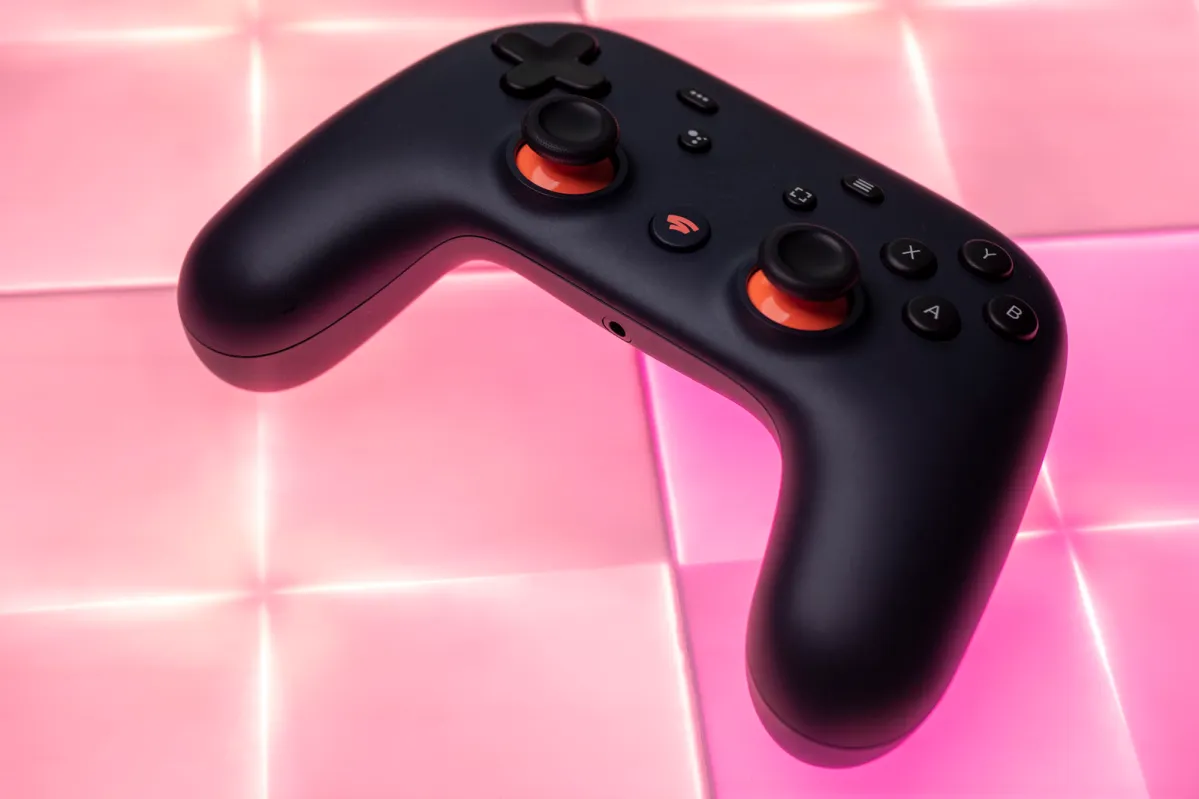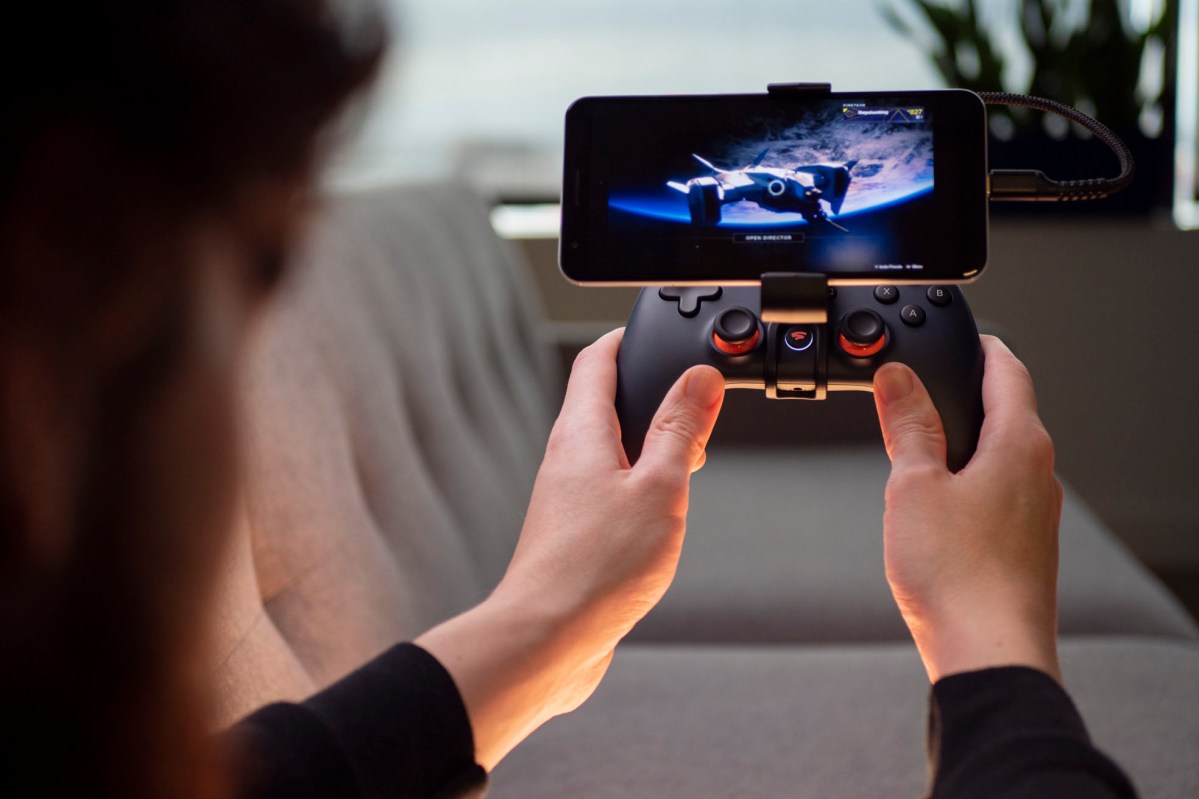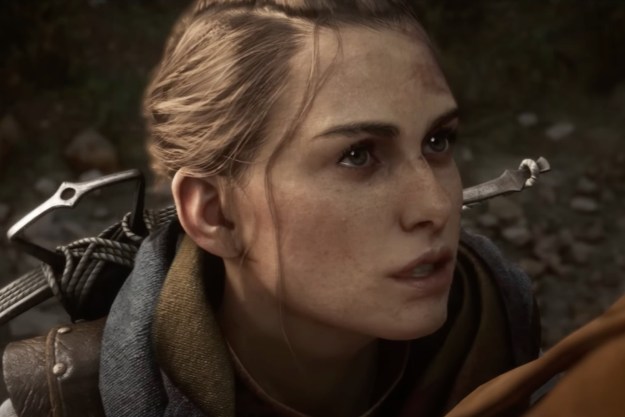
“Google Stadia has immense potential, but a confusing interface and small library sells it short.”
- Excellent image quality
- Plays great on TV and phone
- 1080p tier is free
- Poor performance on PC
- Latency can be an issue
- Too few games at launch
- Subscription isn't a good value
This review was updated by Matthew S. Smith on 3/4/2020.
I picked up Death Stranding at release. Not a download but a real, physical disc. I took it home and placed in my PlayStation 4 Pro.
You’d think that’d be the end of it, but it wasn’t. An installation bar crept across my screen at an agonizing pace. When it finished, I checked the time on my phone. An hour and a half had passed since I first touched the game; 40 minutes since I put it in the console.
That’s what Google wants to fix with Stadia.
What is Stadia?
Stadia is Google’s cloud gaming service. You need an internet connection and a Google account, but if you have that, starting a game is simple. There’s no need for an expensive console or gaming rig. There’s no need to install from a disc or cartridge. There’s nothing to download. Just buy, hit play, and you’re in.
That’s the dream, anyway. It’s a big one, and that means big obstacles. Bugs, a slim library,and confusing interface decisions bring Stadia’s cloud gaming future down to earth.
Stadia basics
Google is banking on Stadia’s simplicity, but it’s not straightforward. Misconceptions about the service have snowballed since its announcement. It’s been called “Netflix for games.” It’s been called a console replacement. It’s been called a Switch competitor.
Here’s the summary: Stadia is a cloud service that runs games on Google’s servers, then beams them to your device. You can play on a TV, on a phone, or on a PC.
Stadia isn’t an all-in-one game library like Xbox Game Pass, so the ‘Netflix for games’ comparison falls apart.
Stadia has two tiers of service. The basic tier serves up 1080p quality with stereo sound; unfortunately, it’s not yet available. The Stadia Pro tier is priced at $10 a month, nets you 4K HDR quality, brings 5.1 surround sound, and has perks like free games and game discounts.
This isn’t an all-in-one game library like Xbox Game Pass, so the “Netflix for games” comparison falls apart. Aside from a handful of “free” games included with Stadia Pro, you’ll have to buy the Stadia version of each game you want to play from Stadia’s store.

Confusion comes in the fine print. You can play on your TV, but at launch, you’ll need a Google Chromecast Ultra. You can play on a phone, but you’ll need a support Android phone. You can play on your PC, but only in the Chrome browser.
There’s more. PC users can play at launch, but they can’t play at 4K with HDR. That’s not coming until 2020. There’s an entire table devoted to listing the various ways Stadia devices and game controllers work (or don’t work) together. You can’t buy games on the TV. You can only do that on your phone’s Stadia app.
Stadia has a caveat for every situation.
Even access is confusing. Stadia has launched, but only if you ordered either the $129 Founder’s Edition, or purchase the similarly priced Premiere Edition. That comes with a Chromecast Ultra, a controller, and three months of Stadia Pro. Don’t want the hardware? Then you can’t play for now, even if you’re willing to pay for Stadia Pro.
On and on and on it goes. Stadia has a caveat for every situation, which undercuts the simplicity Google promised.
No, I don’t have to wait for a game to install, as I did when I brought home Death Stranding. But Stadia still gives me plenty to worry about.
The controller is overpriced
The Founder’s Edition, which I received for this review, includes the Chromecast Ultra and the Stadia Controller. We’ve reviewed the Chromecast Ultra in the past, and it’s a simple streaming puck, so I won’t spend time describing it. The Stadia Controller, new and unique to Stadia, is more intriguing.
OK, I lied. It’s not. It’s a generic controller. The design has a lot in common with the Nintendo Switch Pro Controller, while the thumbstick layout is similar to PlayStation’s DualShock4.
The Stadia Controller feels nice in-hand and works well, but it’s not on par with the controllers from Microsoft, Nintendo, and Sony. The triggers feel a little loose and the D-Pad is vague compared to the DualShock 4 or Nintendo Switch Pro Controller.

The only unique features are a pair of buttons found above the Stadia button (which summons the Stadia menu) and below the select and start buttons. One summons Google Assistant, the other snaps screenshots. Technically, these add more features, but I found them confusing. I often hit the wrong button because I’m used to having just two buttons in this area. I assume I’ll become familiar with it over time, however.
The Stadia Controller can be purchased on its own for $69. That’s Nintendo pricing, and the Stadia Controller doesn’t earn it. An Xbox Wireless controller is $60 at MSRP and is often available for far less.
Some good news? The controller works with other games and services. It even works with other cloud gaming services, like Nvidia’s GeForce Now and Shadow.
You don’t have to buy the Stadia Controller if you wait until the service is widely available next year. Alternative controllers, including the PlayStation 4 and Xbox One controllers, can be used to play Stadia on a phone or PC. However, they don’t work with the Chromecast Ultra.
Stadia delivers the dream…
It’s not looking good for Stadia, is it? Google’s launch was half-baked. Many features are missing or confusing.
Here’s the good news: Stadia works. The dream of seamless, patch-free, download-free, high-quality gaming is real.
I spent most of my time playing Stadia on a television. My home has the luxury of gigabit Internet, so I wasn’t surprised to see smooth gameplay on my TV. Still, it’s an impressive technical achievement. Image quality was excellent. Fuzziness, banding, and stuttering were rarely visible, but image quality was on par with a console most of the time.
To confirm, I switched between Destiny 2 on Stadia and Destiny 2 on my PlayStation 4 Pro, and barely perceived a difference. Details appeared the same on each. Stadia lacked some contrast in dark scenes, but otherwise flaws were few.

The mobile experience (over Wi-Fi) was even more stunning. Destiny 2 looked fantastic on the Pixel 3a’s small, sharp display. Stutters and lag were rare annoyances that didn’t take me away from the gameplay.
I’m still taken aback by how smooth it felt. Stadia sets a new bar for graphics quality on mobile. This is the full experience, running at console-quality, on a smartphone. The phone doesn’t even heat up, and battery life is reasonable because games run in the cloud. I used less than half the Pixel 3a’s battery during a two-hour session of Destiny 2.
Google promised to deliver a console-quality gaming experience over the Internet. On that point, Stadia delivers the goods. I couldn’t tell the difference between Stadia and my PlayStation 4 Pro, and unlike my PlayStation, Stadia never asked to install, patch, or update a game.
As an added bonus, Stadia’s load times are fantastic. Levels tend to load in just seconds. It’s a big leap over the PlayStation 4 Pro, where load times over 30 seconds are the norm.
…but you’ll have to wake up, eventually
At its best, Stadia delivers what was promised. That’s a technical achievement that deserves recognition. But I think you know what’s coming next. It’s time to talk about the flaws.
Latency was a companion on all the devices I tried. Google tried to play down latency in its marketing, but make no mistake. It’s there.
The problem was worst in Mortal Kombat 11 which, like all fighting games, demands precise timing. I quit playing out of frustration after less than half an hour. I constantly fell victim to hits just after I hit the D-pad to dodge, while my attacks swung the space my opponent stood in just a moment before. I’ll be first to admit I’m bad at fighting games, but I’ve played Mortal Kombat 11 on both PC and console. The game felt responsive on both.

Latency was tolerable in Destiny 2, thanks to the leisurely pace of its action, but I found myself over-correcting often and missing melee attacks I should’ve hit. It didn’t make the game more difficult, but it lacked the crisp, snappy feel I’m used to from playing Destiny 2 on a PC.
The issue was intermittent, coming and going like the tides. At its worst, it caused me to do a full 360-degree spin in Destiny 2, as if I’d suddenly teleported into a session of Tony Hawk. In other cases, latency felt non-existent, making even Mortal Kombat 11 feel smooth — for a few minutes. Latency often correlated with reduced image quality and stuttering, but not always.
While image quality can be superb, it can also fall short, depending on the bandwidth available and the device you’re using to play. As you’d expect, you’ll have the best experience if you have an excellent ISP and can connect directly to a router through Ethernet. If you can’t do that, however, you can expect some fuzz to the image. The degree of softness will depend on the resolution you want to play at and the quality of your connection. If you’re using Wi-Fi, you can expect image quality to vary significantly over your play session.
How much that matters depends on what you’re playing. It didn’t impact my experience in Destiny 2, as that game’s strong art style shines through even if Stadia’s image quality takes a dive. Shadow of the Tomb Raider, on the other hand, attempts a sharp and realistic look. If you’re on a PC or TV, you’ll notice when bandwidth forces the stream to a resolution significantly below your display’s native.
About that game library
Stadia’s technical achievements, and flaws, are worth discussion. It’s a revolutionary platform with immense potential and serious problems. All that may not matter, however, because there’s not much to play.
The platform has a slim selection of games. There’s several popular stand-outs in the list including Destiny 2, Red Dead Redemption 2, Metro Exodus, NBA 2K20, and the recent Tomb Raider trilogy.

Those are fine games, there’s nothing that will lure gamers over to Stadia from other platforms. Even Apple Arcade launched with a strong line-up of exclusive games.
I’m also deeply annoyed by Google’s decision to create its own platform. This deeply hurts Destiny 2, where you can only play with other Stadia gamers (your profile, however, is cross-save compatible). Want to show a friend an achievement in Red Dead Redemption 2? You’re going to have to snap a photo of it with your phone, because odds are your friend doesn’t use, and perhaps hasn’t even heard of, Stadia.
Google’s game pricing doesn’t look great, either. Many games sell at their original MSRP. Mortal Kombat 11 for PlayStation 4 is $25 on Amazon, but it’s $59.99 on Stadia. That pattern repeats across the entire line-up. Occasional sales bring prices down on select titles, but the deals haven’t impressed so far.
The limited library makes a Stadia Pro subscription difficult to stomach. Why would you pay $60 for Mortal Kombat 11 on Stadia and cap it off with a $10 monthly subscription? It only makes sense if you don’t own a current-generation console, don’t own a gaming-capable PC, but do want to play modern games at 4K resolution with HDR turned on.
This is the most serious problem facing Stadia. It’s quicker and more convenient than my PlayStation 4 Pro, but I can’t play Death Stranding on Stadia. I also can’t play Control, Civilization VI, The Witcher 3, Final Fantasy XIV, and many other games I enjoy. Patches and system updates are annoying, but I’d rather deal with on occasional patch or install than play only the handful of titles on Stadia.
Use all the data
Streaming can use a lot of data, and Stadia is no exception. In fact, it’s among the most data-hungry services you can use today.
I tested data use while playing Destiny 2 on the Pixel 3a over Wi-Fi. After three test runs, each five minutes long, data use averaged out at about 830 megabytes per test. Do the math, and Stadia consumes an incredible 10 gigabytes every hour.
Stadia consumes an incredible 10 gigabytes every hour.
At that rate, gaming on the go won’t be possible even if you have a data connection reliable enough to allow it. You’ll use up your data cap quickly. Remember, even unlimited plans aren’t truly unlimited. Heavy gamers could run into their data limits on a home Internet connection, though I expect that will be rare.
Our Take
Google’s Stadia is an astounding technical achievement. I’m honestly awestruck by its quality and performance. I went in skeptical, but I came out a convert. Cloud gaming works. Home consoles will last at least another generation, but Stadia proves that the cloud can truly replace a console – if you have an excellent Internet connection, at least.
That makes it even more of a shame Google’s execution has turned Stadia into a maze with no exit and plenty of dead ends. Features don’t work the same on all devices. PC performance is a disaster. And the limited library of games won’t win Stadia any fans.
Maybe I’ll one day abandon my consoles to the cloud, but I’ll keep them for now. Stadia isn’t worth the price of the $129 Premium Edition, or the $10 monthly subscription.
Is there a better alternative?
The alternatives include Nvidia’s GeForce Now, Shadow, PlayStation Now, and Microsoft’s still-in-testing Project xCloud. Shadow is arguably the most mature of these and, because it mimics a PC, it can play just about anything a PC can play. The downside is pricing; it’s at least $12.99 a month with a yearly commitment. Nvidia’s GeForce Now is the budget option, even offering a free tier with a one-hour session limit, but it caps out at 1080p resolution.
Should you buy it?
No. Stadia has potential. But you can’t play games on potential.
Editors' Recommendations
- This might be why AMD’s FSR 3 isn’t picking up momentum
- Fortnite is coming back to iOS, but Epic Games still isn’t happy about it
- You can now launch Game Pass, Luna titles through Google Search
- You can try Google Play Games on PC today as beta expands to the U.S.
- Here’s how to move your Elder Scroll Online Stadia progress to PC for free


